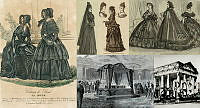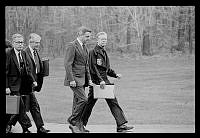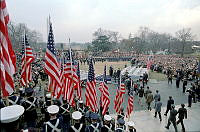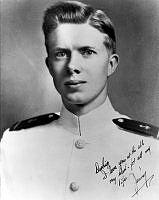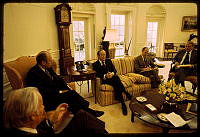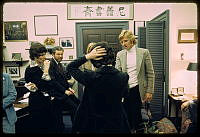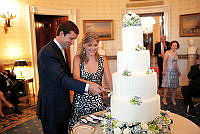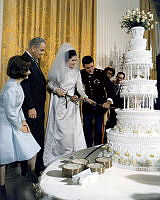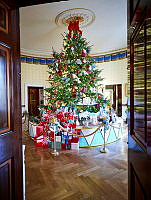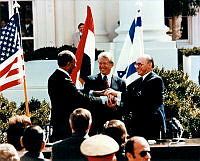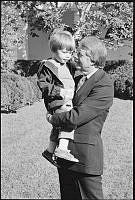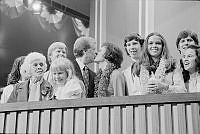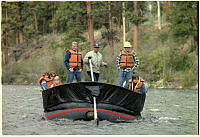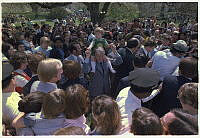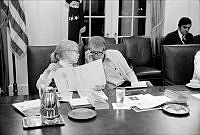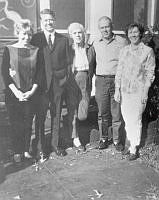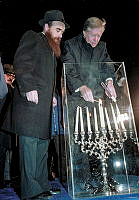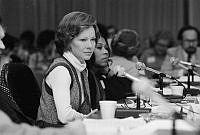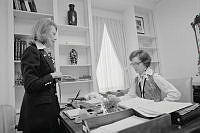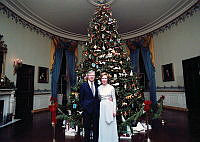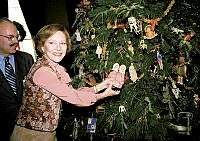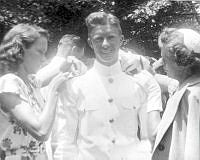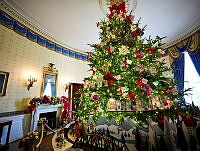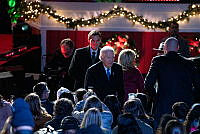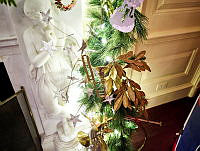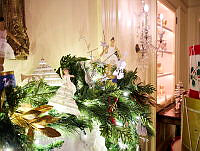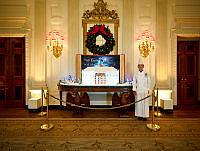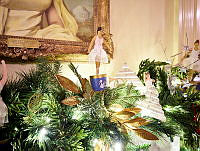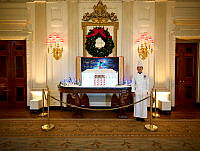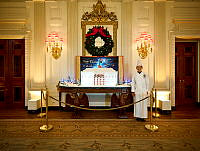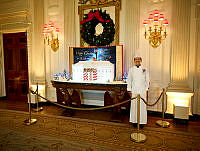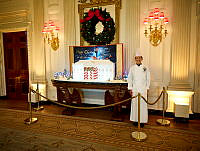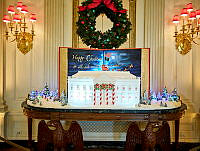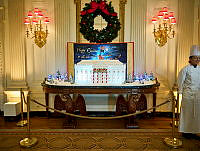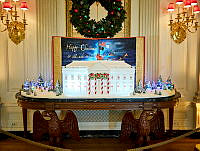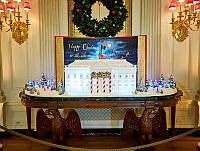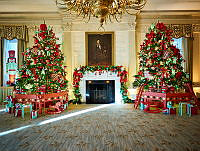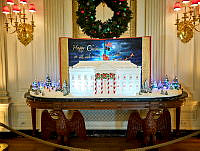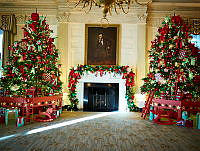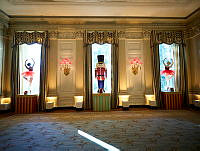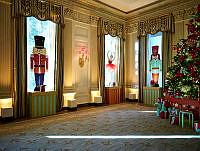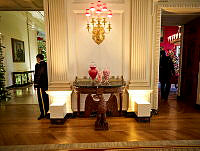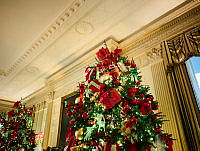The son of an enslaved woman and an unknown white man, Frederick Augustus Washington Bailey was born into slavery in 1818 on Maryland's eastern shore. He was enslaved for twenty years in city households in Baltimore and on Maryland farms. In 1838, he fled north and changed his name to Frederick Douglass.
Douglass was highly active in the abolitionist movement and became one of its greatest leaders. He gave numerous speeches about his life as an enslaved man and the enormity of the institution. He also published his autobiography, Narrative of the Life of Frederick Douglass, an American Slave in 1845, which further bolstered anti-slavery efforts. During the Civil War he met with President Abraham Lincoln and encouraged African American men to take their freedom by fighting for the Union army.
Douglass was a revered African American leader. In 1874 he arrived in Lafayette Square as the newly appointed president of the Freedman's Savings and Trust Company, a bank chartered by Congress in 1865 to safeguard the savings of African American Civil War veterans and former slaves. When Douglass saw the Freedman's Bank building for the first time, he compared the experience to the way the Queen of Sheba, an African queen, felt upon seeing the riches of King Solomon. Douglass wrote, "The whole thing was beautiful. . . I felt like the Queen of Sheba when she saw the riches of Solomon, that 'half had not been told me'."
In his new role as president of the bank, Douglass began to familiarize himself with the institution's finances and operations, and learned that the bank was weakened by missing funds and substantial liabilities. In an attempt to strengthen the bank, Douglass deposited $10,000 of his own money in the bank. He also notified Congress, which held the bank's charter, of its insolvency. However, the bank failed in June 1874, and with it vanished three million dollars belonging to 61,000 African Americans.
Just a few years later, in 1877, when President Rutherford Hayes appointed him the U.S. Marshal of the District of Columbia, Frederick Douglass became the first African American confirmed for a Presidential appointment by the U.S. Senate. In his capacity as U.S. Marshal, Douglass was not asked to perform one of the duties often assigned to the position—to formally introduce visiting dignitaries to the President. Though he was urged to resign in protest, Douglass did not and later wrote of his experiences at the White House: I was ever a welcome visitor at the Executive Mansion on state occasions and all others, while Rutherford B. Hayes was President of the United States. I have further to say that I have many times during his administration had the honor to introduce distinguished strangers to him, both of native and foreign birth, and never had reason to feel myself slighted by himself or his amiable wife. . .
In 1889 President Benjamin Harrison appointed him Minister to Haiti, a post he held until 1891. Citing Haiti's revolution, Douglass constantly emphasized the connections between its origins and America's. These positions were among the highest an African American man had been appointed two in the 19th century. Frederick Douglass died in 1895, leaving behind a rich legacy from enslaved man to a driving force of the abolitionist movement and ambassador to the black republic, Haiti.
















